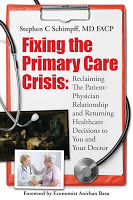Wound management is driven by a surprising array of technologies, but the motive force behind technology development is the trends in nature and distribution of different wound types. Below is an excerpt from MedMarket Diligence Report #S247 on key wound type trends.
Wound management is driven by a surprising array of technologies, but the motive force behind technology development is the trends in nature and distribution of different wound types. Below is an excerpt from MedMarket Diligence Report #S247 on key wound type trends.
Surgical Wounds. Surgical wounds account for the vast majority of skin injuries. We estimate that there are over 100 million surgical incisions a year, which require some wound management treatment. Approximately 80% of these wounds use some form of closure product (sutures, staples, and tapes). Many employ hemostasis products, and use fabric bandages and surgical dressings.
Surgical wounds are projected to increase in number at an annual rate of 3.1%, but overall the severity and size of surgical wounds will continue to decrease over the next ten years as a result of the continuing trend toward minimally invasive surgery.
Surgical procedures generate a preponderance of acute wounds with uneventful healing and a lower number of chronic wounds, such as those generated by wound dehiscence or post-operative infection. Surgical wounds are most often closed by primary intention, using products such as sutures, staples, or glues, where the two sides across the incision line are brought close and mechanically held together. Surgical wounds that involve substantial tissue loss or may be infected are allowed to heal by secondary intention where the wound is left open under dressings and allowed to fill by granulation and close by epithelialization. Some surgical wounds may be closed through delayed primary intention where they are left open until such time as it is felt it is safe to suture or glue the wound closed.
A significant feature of all wounds is the likelihood of pathological infection occurring. Surgical wounds are no exception, and average levels of infection of surgical wounds are 7%–10% dependent on the procedure. These infections can be prevented by appropriate cleanliness, surgical discipline and skill, wound care therapy, and antibiotic prophylaxis. Infections usually lead to more extensive wound care time, the use of more expensive products and drugs, significantly increased therapist time, and increased morbidity and rehabilitation time. A large number of wounds will also be sutured to accelerate closure, and a proportion of these will undergo dehiscence and require aftercare for healing to occur.
Traumatic Wounds. There are estimated to be 1.5 million cases of traumatic wounding every year. These wounds require cleansing and treatment with low adherent dressings to cover them, prevent infection, and allow healing by primary intention. Lacerations are a specific type of trauma wound that are generally more minor in nature and require cleansing and dressing for a shorter period of healing. Lacerations occur frequently (approximately 19 million cases a year) as a result of cuts and grazes and can usually be treated within the doctor’s surgery and outpatient medical center and hospital accident and emergency department.
Burns. Burn wounds can be divided into minor burns, medically treated, and hospitalized cases. Outpatient burn wounds are often treated at home, at the doctor’s surgery, or at outpatient clinics. As a result a large number of these wounds never enter the formal health service system. We estimate that approximately 3.3 million burns in this category do enter the outpatient health service system and receive some level of medical attention. These burns use hydrogels and advanced wound care products, and may even be treated with consumer based products for wound healing. Medically treated burn wounds usually get more informed care to remove heat from the tissue, maintain hydration, and prevent infection. Advanced wound care products are used on these wounds. Approximately 6.3 million burns like this are treated medically every year. Hospitalized burn wounds are more rare and require more advanced and expensive care. These victims require significant care, nutrition, debridement, tissue grafting and often tissue engineering where available. They also require significant aftercare and rehabilitation to mobilize new tissue, and physiotherapy to address changes in physiology.
Chronic Wounds. Chronic wounds generally take longer to heal and care is enormously variable, as is the time to healing. There are approximately 7.4 million pressure ulcers in the world that require treatment every year. Many chronic wounds around the world are treated sub-optimally with general wound care products designed to cover and absorb some exudates. The optimal treatment for these wounds is to receive advanced wound management products and appropriate care to address the underlying defect that has caused the chronic wound; in the case of pressure ulcers the causal effect is pressure and a number of advanced devices exist to reduce pressure for patients. There are approximately 11 million venous ulcers, and 11.3 million diabetic ulcers in the world requiring treatment. Chronic wounds are growing in incidence due to the growing age of the population, and due mostly to awareness and improved diagnosis. At present these factors are contributing to growth of this pool of patients faster than the new technologies are reducing the incidence of wounds by healing them.
Wound management products are also used for a number of other conditions including amputations, carcinomas, melanomas, and other complicated skin cancers, which are all on the increase.
See “Worldwide Wound Management, 2008-2017: Established and Emerging Products, Technologies and Markets in the U.S., Europe, Japan and Rest of World.”






